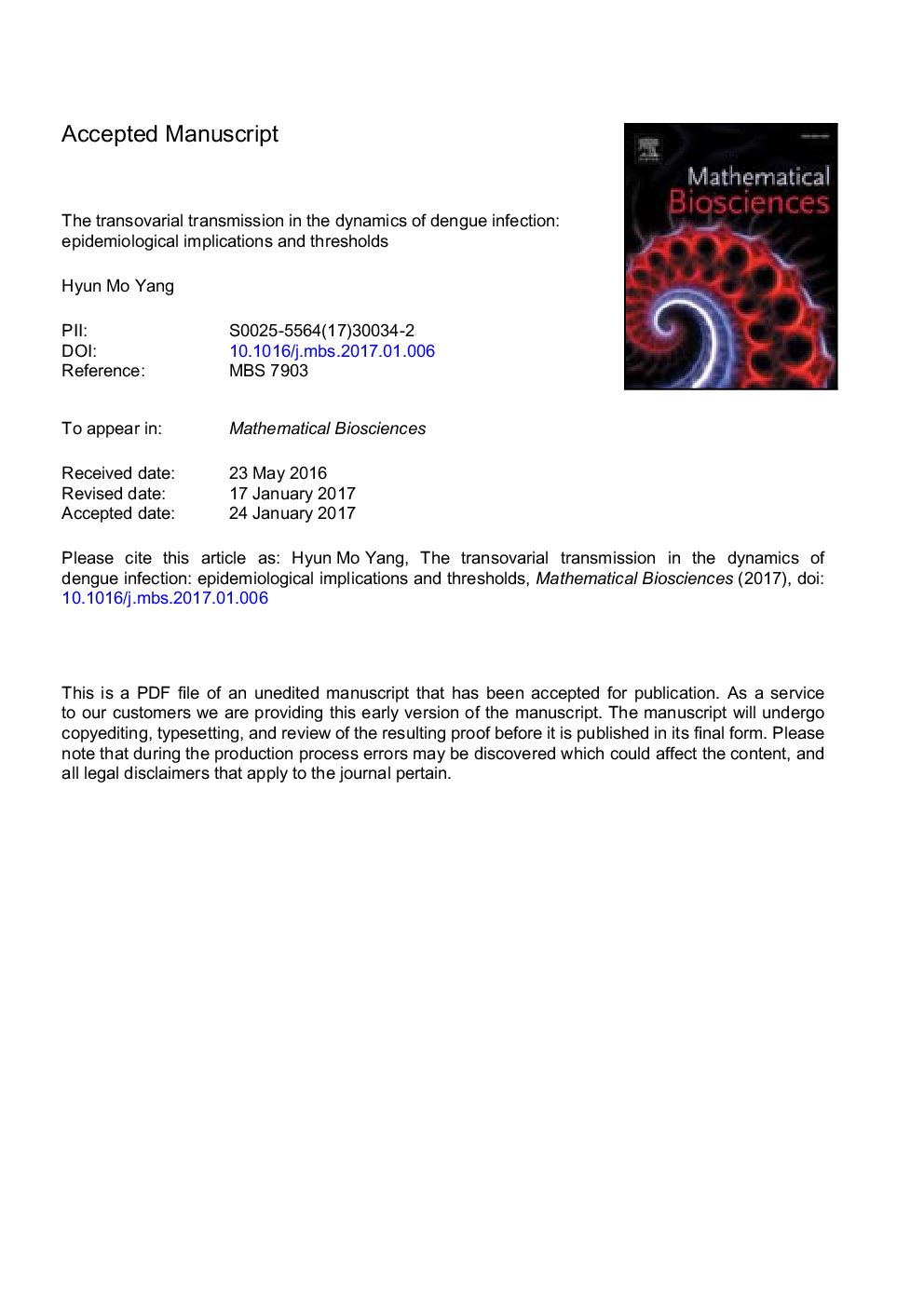| کد مقاله | کد نشریه | سال انتشار | مقاله انگلیسی | نسخه تمام متن |
|---|---|---|---|---|
| 5760385 | 1623994 | 2017 | 42 صفحه PDF | دانلود رایگان |
عنوان انگلیسی مقاله ISI
The transovarial transmission in the dynamics of dengue infection: Epidemiological implications and thresholds
دانلود مقاله + سفارش ترجمه
دانلود مقاله ISI انگلیسی
رایگان برای ایرانیان
کلمات کلیدی
موضوعات مرتبط
علوم زیستی و بیوفناوری
علوم کشاورزی و بیولوژیک
علوم کشاورزی و بیولوژیک (عمومی)
پیش نمایش صفحه اول مقاله

چکیده انگلیسی
The anthropophilic and peridomestic female mosquito Aedes aegypti
bites humans to suck blood to maturate fertilized eggs, during which dengue virus can be spread between mosquito and human populations. Besides this route of transmission, there is a possibility of dengue virus being passed directly to offspring through transovarial (or vertical) transmission. The effects of both horizontal and transovarial transmission routes on the dengue virus transmission are assessed by mathematical modeling. From the model, the reproduction number is obtained and the contribution of transovarial transmission is evaluated for different levels of horizontal transmission. Notably, the transovarial transmission plays an important role in dengue spread when the reproduction number is near one. Another threshold parameter arises, which is the product of the fractions of the susceptible populations of humans and mosquitoes. Interestingly, these two threshold parameters can be obtained from three different approaches: the spectral radius of the next generation matrix, the Routh-Hurwitz criteria and M-matrix theory.
ناشر
Database: Elsevier - ScienceDirect (ساینس دایرکت)
Journal: Mathematical Biosciences - Volume 286, April 2017, Pages 1-15
Journal: Mathematical Biosciences - Volume 286, April 2017, Pages 1-15
نویسندگان
Hyun Mo Yang,